Jens Bayer
Traversing the Subspace of Adversarial Patches
Dec 02, 2024Abstract:Despite ongoing research on the topic of adversarial examples in deep learning for computer vision, some fundamentals of the nature of these attacks remain unclear. As the manifold hypothesis posits, high-dimensional data tends to be part of a low-dimensional manifold. To verify the thesis with adversarial patches, this paper provides an analysis of a set of adversarial patches and investigates the reconstruction abilities of three different dimensionality reduction methods. Quantitatively, the performance of reconstructed patches in an attack setting is measured and the impact of sampled patches from the latent space during adversarial training is investigated. The evaluation is performed on two publicly available datasets for person detection. The results indicate that more sophisticated dimensionality reduction methods offer no advantages over a simple principal component analysis.
Network transferability of adversarial patches in real-time object detection
Aug 28, 2024Abstract:Adversarial patches in computer vision can be used, to fool deep neural networks and manipulate their decision-making process. One of the most prominent examples of adversarial patches are evasion attacks for object detectors. By covering parts of objects of interest, these patches suppress the detections and thus make the target object 'invisible' to the object detector. Since these patches are usually optimized on a specific network with a specific train dataset, the transferability across multiple networks and datasets is not given. This paper addresses these issues and investigates the transferability across numerous object detector architectures. Our extensive evaluation across various models on two distinct datasets indicates that patches optimized with larger models provide better network transferability than patches that are optimized with smaller models.
Utilizing dataset affinity prediction in object detection to assess training data
Nov 16, 2023Abstract:Data pooling offers various advantages, such as increasing the sample size, improving generalization, reducing sampling bias, and addressing data sparsity and quality, but it is not straightforward and may even be counterproductive. Assessing the effectiveness of pooling datasets in a principled manner is challenging due to the difficulty in estimating the overall information content of individual datasets. Towards this end, we propose incorporating a data source prediction module into standard object detection pipelines. The module runs with minimal overhead during inference time, providing additional information about the data source assigned to individual detections. We show the benefits of the so-called dataset affinity score by automatically selecting samples from a heterogeneous pool of vehicle datasets. The results show that object detectors can be trained on a significantly sparser set of training samples without losing detection accuracy.
Eigenpatches -- Adversarial Patches from Principal Components
Jun 19, 2023Abstract:Adversarial patches are still a simple yet powerful white box attack that can be used to fool object detectors by suppressing possible detections. The patches of these so-called evasion attacks are computational expensive to produce and require full access to the attacked detector. This paper addresses the problem of computational expensiveness by analyzing 375 generated patches, calculating the principal components of these and show, that linear combinations of the resulting "eigenpatches" can be used to fool object detections successfully.
A Comparison of Deep Saliency Map Generators on Multispectral Data in Object Detection
Aug 26, 2021

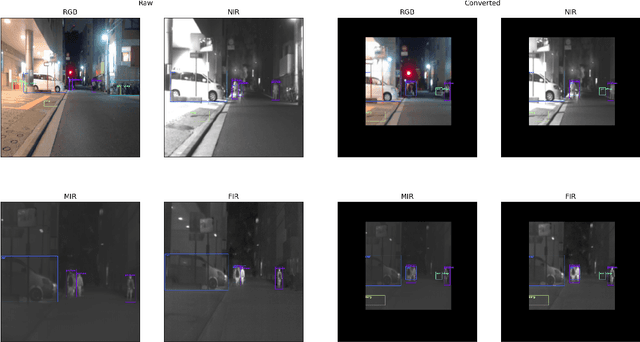
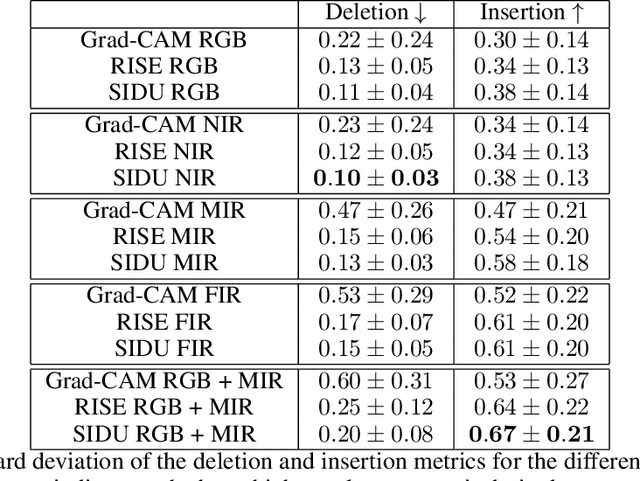
Abstract:Deep neural networks, especially convolutional deep neural networks, are state-of-the-art methods to classify, segment or even generate images, movies, or sounds. However, these methods lack of a good semantic understanding of what happens internally. The question, why a COVID-19 detector has classified a stack of lung-ct images as positive, is sometimes more interesting than the overall specificity and sensitivity. Especially when human domain expert knowledge disagrees with the given output. This way, human domain experts could also be advised to reconsider their choice, regarding the information pointed out by the system. In addition, the deep learning model can be controlled, and a present dataset bias can be found. Currently, most explainable AI methods in the computer vision domain are purely used on image classification, where the images are ordinary images in the visible spectrum. As a result, there is no comparison on how the methods behave with multimodal image data, as well as most methods have not been investigated on how they behave when used for object detection. This work tries to close the gaps. Firstly, investigating three saliency map generator methods on how their maps differ across the different spectra. This is achieved via accurate and systematic training. Secondly, we examine how they behave when used for object detection. As a practical problem, we chose object detection in the infrared and visual spectrum for autonomous driving. The dataset used in this work is the Multispectral Object Detection Dataset, where each scene is available in the FIR, MIR and NIR as well as visual spectrum. The results show that there are differences between the infrared and visual activation maps. Further, an advanced training with both, the infrared and visual data not only improves the network's output, it also leads to more focused spots in the saliency maps.
Image-based OoD-Detector Principles on Graph-based Input Data in Human Action Recognition
Mar 03, 2020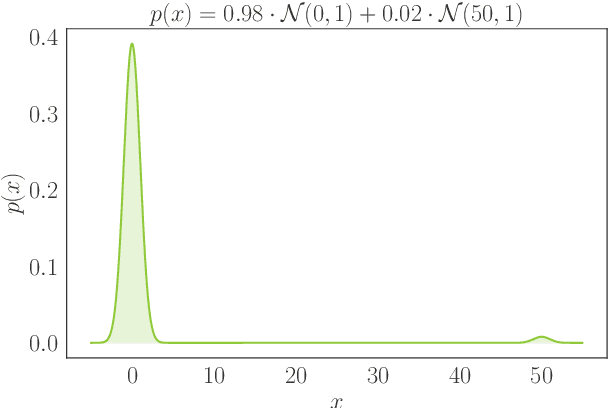
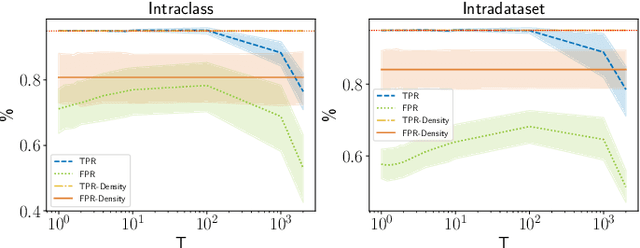
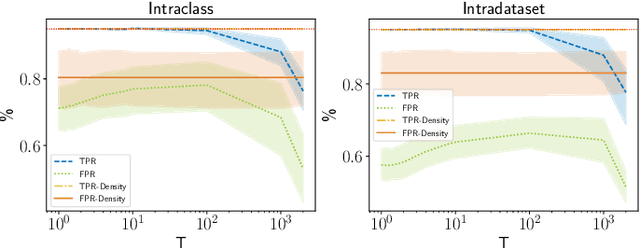
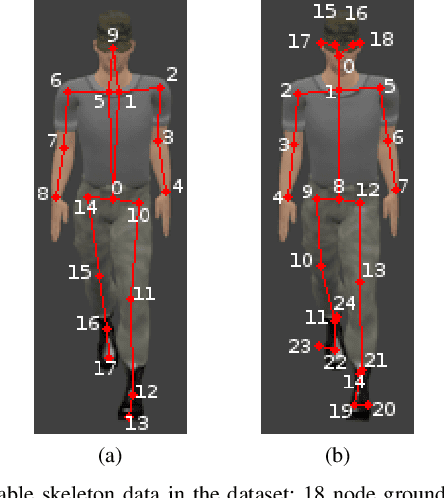
Abstract:Living in a complex world like ours makes it unacceptable that a practical implementation of a machine learning system assumes a closed world. Therefore, it is necessary for such a learning-based system in a real world environment, to be aware of its own capabilities and limits and to be able to distinguish between confident and unconfident results of the inference, especially if the sample cannot be explained by the underlying distribution. This knowledge is particularly essential in safety-critical environments and tasks e.g. self-driving cars or medical applications. Towards this end, we transfer image-based Out-of-Distribution (OoD)-methods to graph-based data and show the applicability in action recognition. The contribution of this work is (i) the examination of the portability of recent image-based OoD-detectors for graph-based input data, (ii) a Metric Learning-based approach to detect OoD-samples, and (iii) the introduction of a novel semi-synthetic action recognition dataset. The evaluation shows that image-based OoD-methods can be applied to graph-based data. Additionally, there is a gap between the performance on intraclass and intradataset results. First methods as the examined baseline or ODIN provide reasonable results. More sophisticated network architectures - in contrast to their image-based application - were surpassed in the intradataset comparison and even lead to less classification accuracy.
 Add to Chrome
Add to Chrome Add to Firefox
Add to Firefox Add to Edge
Add to Edge